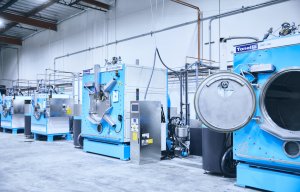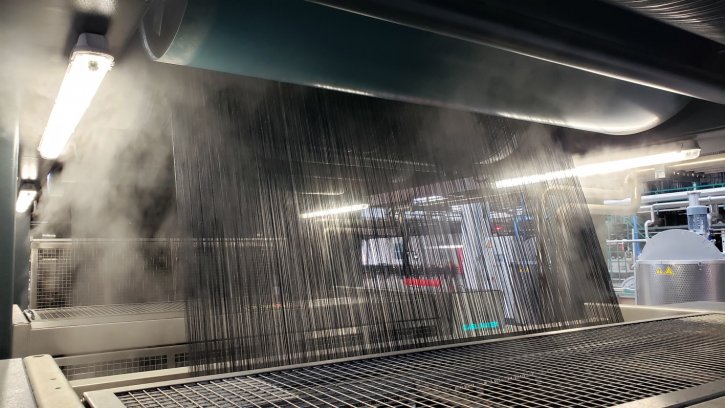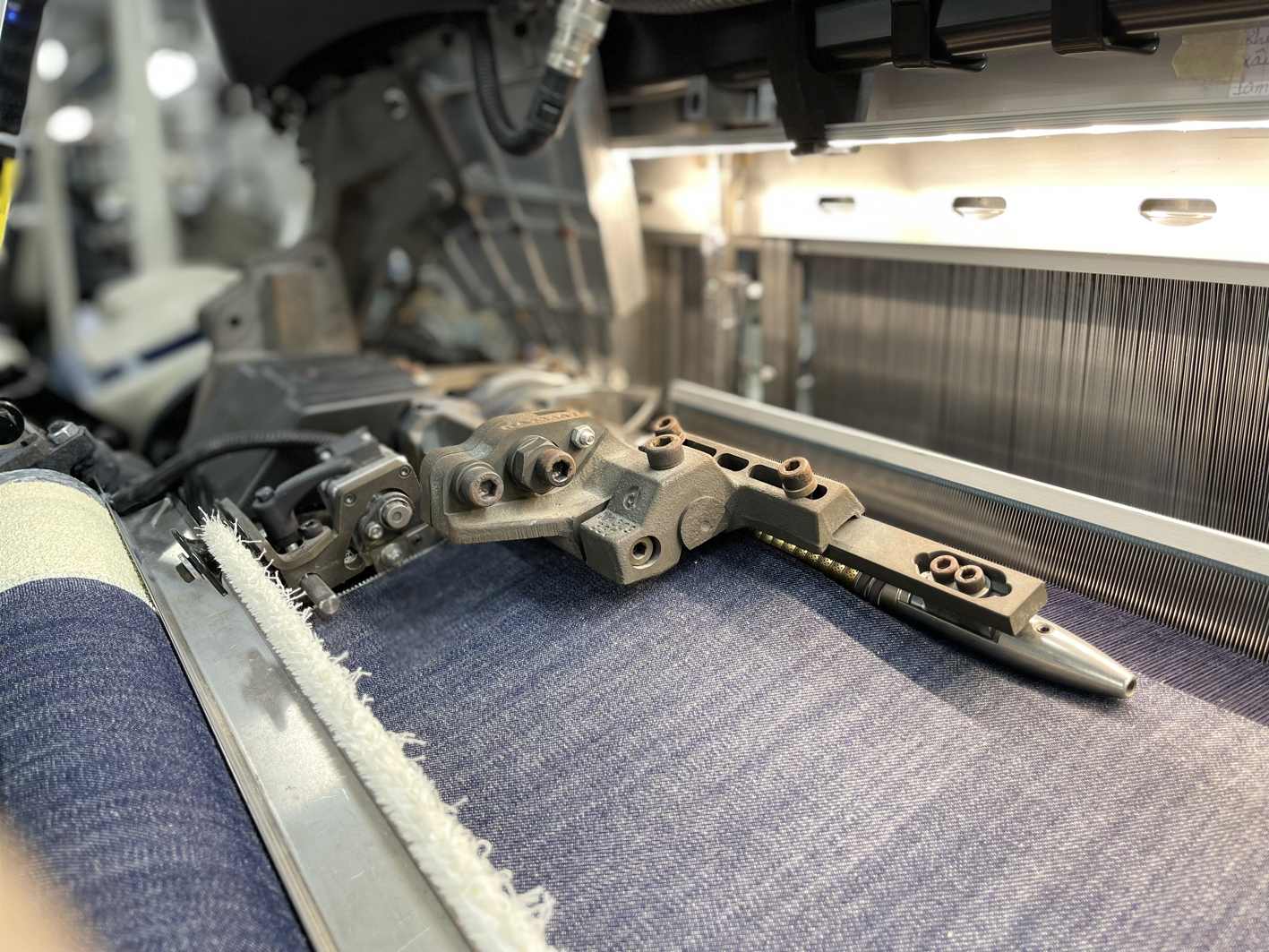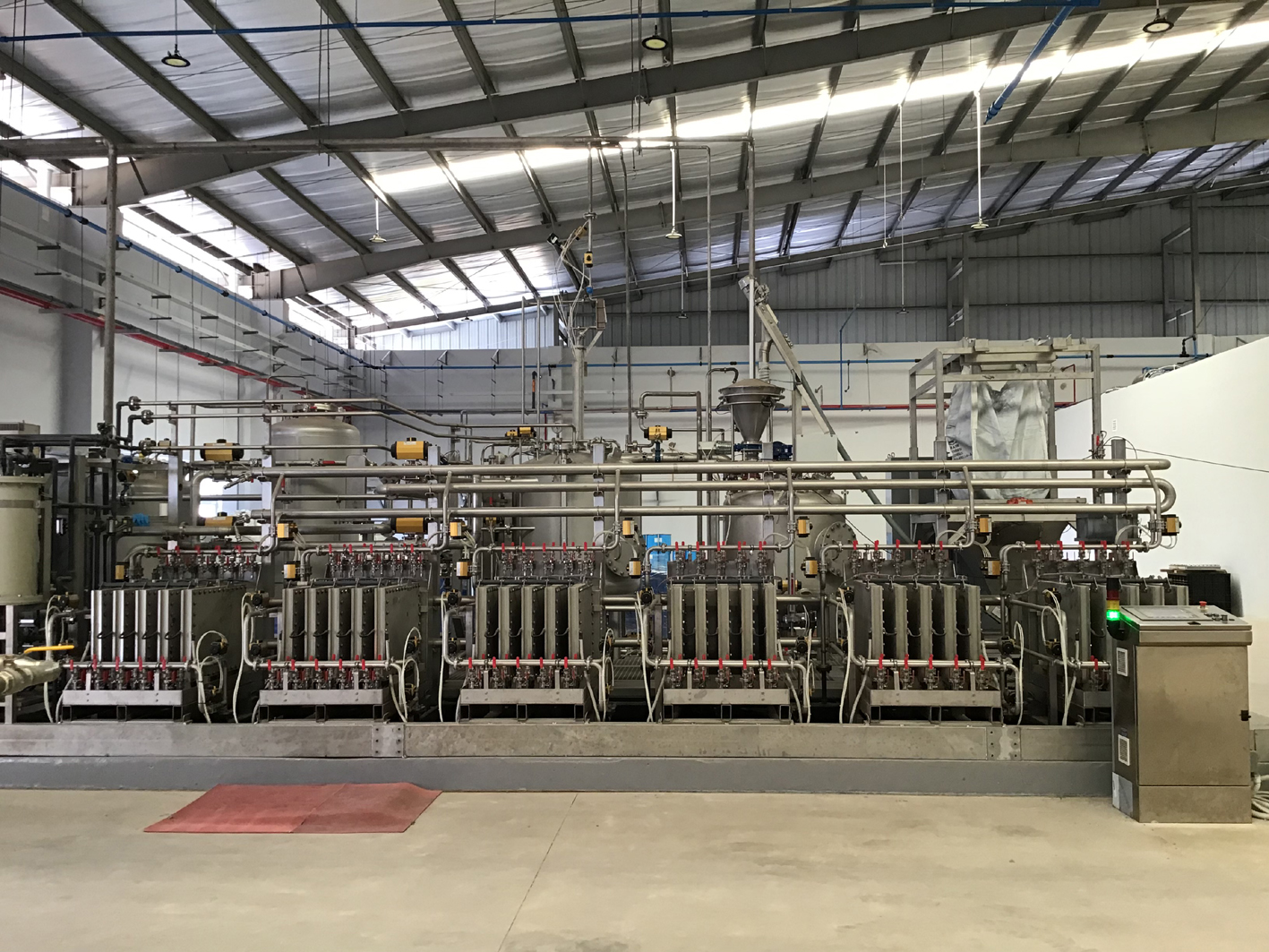
Saitex joins the companies bringing denim back home
New mill has an annual capacity of 24 million metres of fabric.

2nd February 2022
Innovation in Textiles
|
Ho Chi Minh City, Vietnam
Saitex is opening a new fabric mill 40 minutes from its cut and sew factory outside Ho Chi Minh City in Vietnam.
Encompassing 100,000 square metres – 40% of which is reserved for farming – the site’s capabilities include the spinning, weaving, dyeing, and finishing of fabric sourced from responsible cotton producers.
The mill has created 630 jobs to date, and at full capacity will employ 1,000 people, with plans to have 20% of jobs dedicated to people with disabilities – an initiative first started in the cut and sew factory to create upcycled merchandise for the Rekut product line.
Building on the recent opening of its Factory of the Future in Los Angeles and its denim facility in Vietnam, the integration of the new mill into the Saitex value stream gives the company unprecedented control and traceability of the life cycles of its garments.
Seed to shelf
A “seed to shelf” approach to manufacturing starts with close partnerships with cotton farmers, utilises eco-efficient spinning, weaving, and dyeing machinery, and incorporates a production creation centre (PCC) with the capability to create and prototype garment samples on-site. Brand partners are now offered one of the most sustainable and transparent “seed to shelf” processes,globally.

The company’s spinning capabilities allow for the blending of different materials with dual-core, multiple-core and SiroSPUN technology.
Dyeing takes place at the yarn phase with the Smart-Indigo system, to develop hydrosulphite-free indigo dye baths that only use indigo pigment, caustic soda, water and electricity. The Smart-Indigo system utilises an electrochemical dye bath preparation that emits 90% less CO2, consumes 70% less energy, and 30% less water where the only waste product is oxygen.
The mill uses energy-efficient Karl Mayer rope dyeing machines which enable a minimum 30% reduction in indigo and chemical usage. Finishing systems include singeing, mercerizing, pad batch dyeing, pad steam dyeing, stentering, sanforizing and fabric tumbling. The mill’s machinery uses less energy, fewer chemicals, and less water in environmentally friendly processes with a capacity of 24 million metres of fabric per year.
LEED Gold
It was constructed with a roof that reflects sunlight and installed natural ventilation, and it employs materials that adhere to LEED Gold Certified specifications. The solar panel system consists of nearly 15,000 panels with 3-4 MW capacity, which equates to 2,000+ tons of CO2 reduction yearly. Additional energy is derived from industrial sludge which is used to generate 40% of the facility’s steam power. Greywater is collected from the industrial park, run through the custom reverse osmosis (RO) ultrafiltration recycling system and is then used in the production processes, allowing the mill to operate without the use of fresh water and achieving a closed water loop. Additionally, rainwater is collected for use by flushing factory toilets irrigation, and a sprinkler system. Within the mill compound, a hydroponic farming system and organic farming fields occupy 40% of the space and will produce six tons of clean vegetables per year to feed employees and local communities.

Furthermore, 6,000 trees have been planted in the industrial park and 50 hectares of mangroves were planted in the country to offset carbon emissions, helping to progress the mill to carbon neutrality by 2025. It is also in the process of obtaining ZDHC, Oeko-Tex, GOTS, GRS, B Corp., and LEED certifications and has future plans to apply for bluesign and Fair Trade status.
“It has been our long-term vision to close the loop on our operations,” said Saitex CEO and founder Sanjeev Bahl. “With the opening of the mill and the upcoming launch of our Stelapop textile upcycling facility, our vision will be complete. “We will close the circle, allowing us to provide unprecedented transparency in denim production and the ability to turn apparel and textile waste into high-quality goods.”
The Saitex cut and sew facility Vietnam facility produces an average of 18,000 pairs of jeans per day and has a $2 million recycling system on-site.
The company’s brand partners includes Calvin Klein Jeans, Edwin USA, Everlane, Gap, G-Star Raw, J Crew, Madewell, Polo Ralph Lauren, Target and Tommy Hilfiger.

Business intelligence for the fibre, textiles and apparel industries: technologies, innovations, markets, investments, trade policy, sourcing, strategy...
Find out more